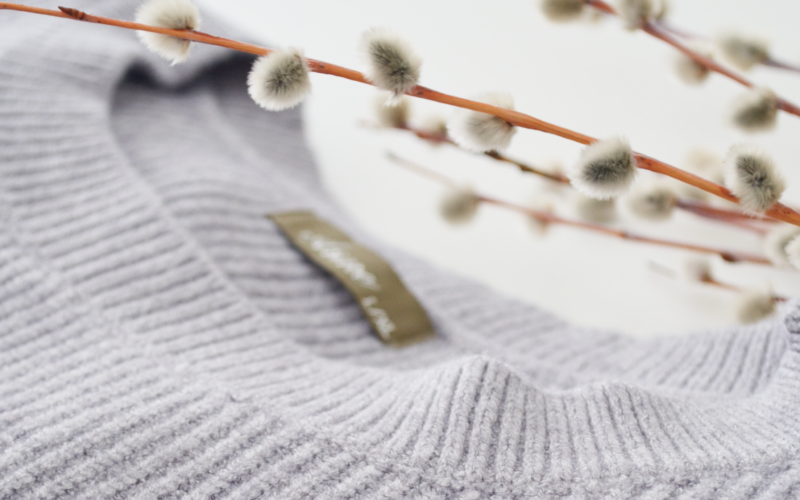Globally we throw away 92 million tonnes of garments every year, the equivalent of a rubbish truck load of clothes going to waste every second. With the rise of fast fashion, the average clothing item is only worn 7 times before being replaced, a decrease of 40% in the last 15 years. We’re not entirely to blame, the fashion industry focuses on pumping out cheaper clothes faster, encouraging a constant flow of clothing consumption and creating up to 8% of global carbon emissions and 9% of the microplastics in the ocean in the process. But learning how to maintain and sustainably care for your clothes can help them last longer and reduce the amount we throw away.
Table of Contents

Types Of Fabric
Sustainably caring for clothes starts with knowing the type of fabric your clothes are made from. The type of fabric your clothes are made from will determine how you need to care for it. It can also help you gauge what to buy going forward based on how much effort you want to put into caring for your items.
Animal Fibre Fabric
Examples Wool (Sheep, Alpaca, Angora, Mohair), Silk, Cashmere, Leather, Suede
Animal fibre fabric is generally prized for its breathability and odour resistance (wool), renewable nature and durability (leather). But many clothes made from animal fibres tend to be more delicate and require a bit more care than plant-based or synthetic fibres. Additionally, due to animal cruelty concerns around a lot of these fibres (silk, leather and suede) they’re best to avoid if you’re trying to be eco and animal friendly.
Plant Fibre Fabric
Examples Cotton, Denim, Linen, Hemp, Jute, Bamboo
With the exception of cotton, clothes and fabrics made from plants need to be handled with relative care too. Most benefit from cold or hand washing and shouldn’t be tumble dried. Cotton and its reworked child, denim, can withstand a bit more heat if needed.
Synthetic Fibre Fabric
Examples Polyester, Nylon, Spandex, Rayon, Vegan Leather & Suede, Neoprene
Synthetic fibre fabrics are man-made, mostly from oil-based chemicals. They’re made to mimic the best parts of animal and plant based fibres, but with added convenience factors. Synthetic fabrics are generally the least expensive and easiest to maintain.

Types of Detergent
Not all detergents are created equal, or for all types of fabrics. Harsh chemicals from many conventional detergents can damage fibres in your clothing, causing them to wear down faster. On top of damaging clothes, chemicals from washing detergents enter waterways and oceans, negatively impacting the surrounding natural environment. The next step in sustainably caring for clothes involves knowing the best type of detergent for the fabric you’re washing.
Group Your Fabrics
Start by identifying and grouping your fabrics. Delicates with delicates, light coloured clothes with light coloured clothes. This’ll make it easier to care for them and avoid damaging delicate fabrics with harsh detergents or intense heats.
Use Homemade or Eco-Friendly Detergent
Eco-friendly or homemade detergent options reduce, or even remove, toxic chemicals from the washing process.
Washing Temperature
Almost all of your clothes can benefit from being washed in cool or cold water. Washing clothes with warm or hot water causes material shrinkage and the breakdown of fibres and dyes.
Washing on cold not only helps preserve your clothes for longer but it can also reduce the energy used by your washing machine by 90%. If every household switched to a cold wash four out of every five washes, their annual CO2 emissions would decrease by 864 pounds.
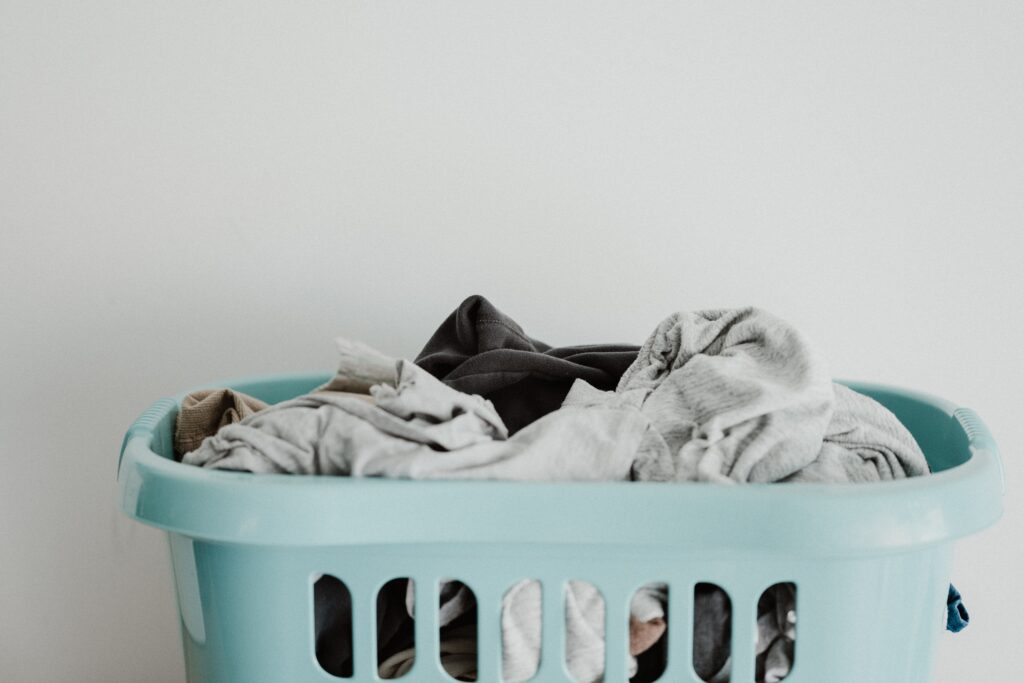
How Often Should You Wash Clothes
Probably not as often as you think, and since washing and drying our clothes accounts for 120 million tonnes of CO2 equivalent, the earth would probably want you to wash your clothes less often too. Some daily wear items like socks and underwear need to be washed after every wear but most items can go longer. T-shirts, sweaters, sweatpants can handle a few wears. Jeans, jackets, hats and scarfs only need to be washed every so often.
In general, you only need to wash clothes if they’re dirty. And even then you might be able to get away with spot cleaning or an odour freshener. Can I interest you in some vodka spray?
Washing and drying clothes releases microfibres into our waterways and oceans. Up to 700,000 microfibres can come off synthetic clothes in a single wash and since they’re so small, they make it through the filtration process. As a result, between 2015-2050, 22 million tonnes of microfibres will enter our oceans. By reducing the amount you washing your clothes, you can help reduce the amount of microfibres ending up in our oceans.
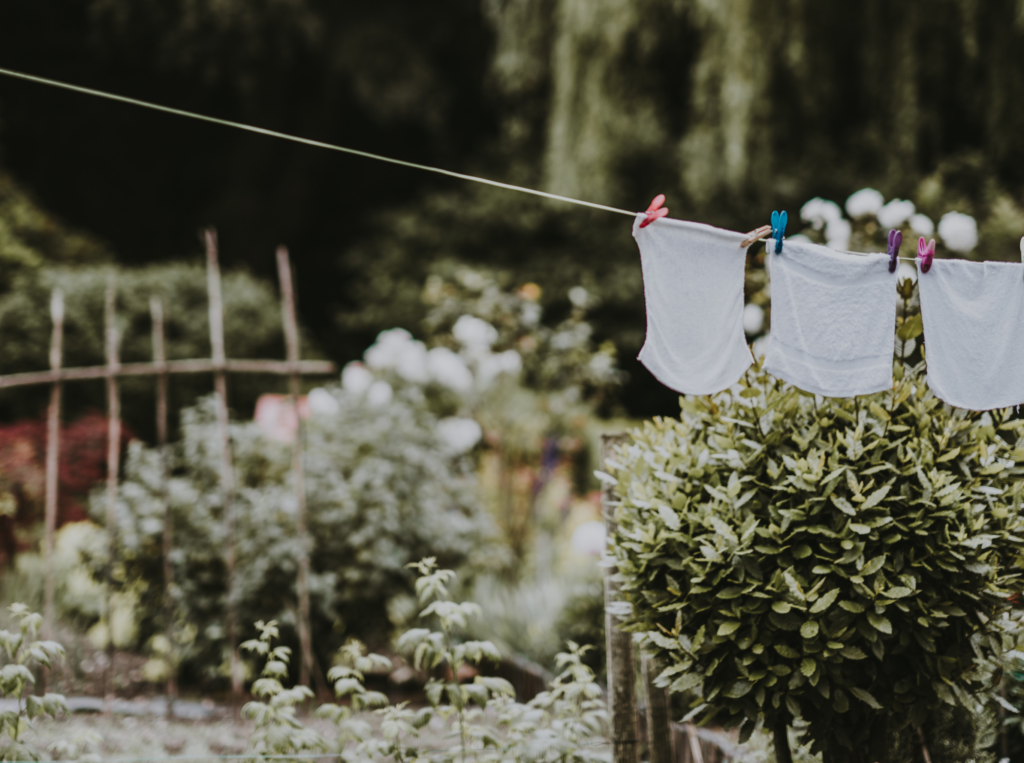
How To Dry Your Clothes
Drying your clothes properly can be almost as important as washing them properly. Many a top has come out of the dryer shrunken and misshapen, never to be worn again. But air drying and using a clothing rack or line can help prevent clothing damage.
Avoiding the dryer will help keep your energy bill down too since a dryer uses as much energy as a washing machine, refrigerator and dishwasher combined.

How To Store Your Clothes
After putting all this energy into sustainably caring for your clothes, the last thing you want is for them to be ruined in storage.
Space To Breathe
Give your clothes airflow and space to breathe in your wardrobe to help prevent any mould forming from rising damp.
Deter Moths
Keeping lavender near your clothes is an eco-friendly way to deter moths and keep your clothes holes free.
Fold Wool
Avoid stretching wool items by folding them instead of hanging on a hanger.
Vacuum Seal Off Season Clothes
Rotating your clothes out according to the seasons can be a space efficient way of managing your clothes and giving your clothes room in your wardrobe. Bagging and vacuum sealing clothes can help keep them safe throughout the year in a space saving way.
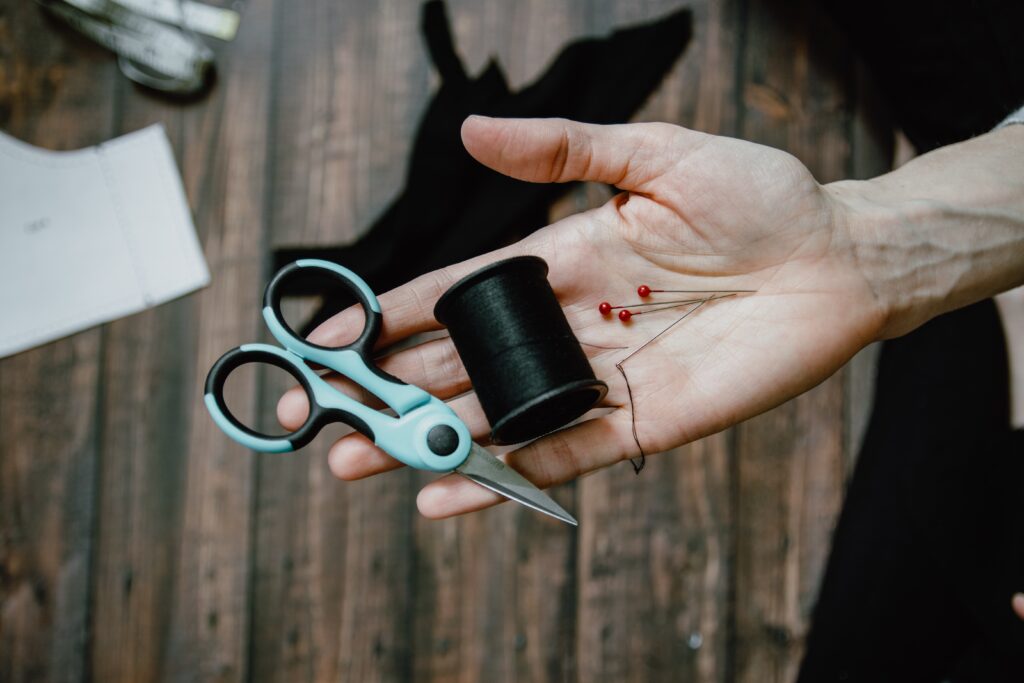
How to Repair Clothes
Before deciding to part with an item because the hem fell, a seam came loose or the fabric became pilly, see if you can fix the problem first. With the accessibility and affordability of fast fashion, it’s easy to jump to replacing an item instead of fixing it. But a few simple mending skills can go a long way in increasing the life of your clothes.
Learn A Few Stitches
Learning a few simple sewing stitches, like a running stitch, can save you a lot of hassle in finding a tailor or save you a lot of money in replacing clothes. You can hem using a cross stitch, or for an even easier solution, you can buy iron on hemming tape.
Remove Pilling
Pilling can be the bain of any good sweater. But all isn’t lost if your sweater succumbs to the dreaded pills. Pumice stones or basic razors can be used to rub or shave them off leaving your fabric practically good as new.
Find a Good Tailor
There’s no shame in knowing your limits and some repair or alteration jobs just need an expert. Finding a good tailor in your area not only saves you time (and maybe patience) but it also extends the life of your clothes and can give an old item new life.
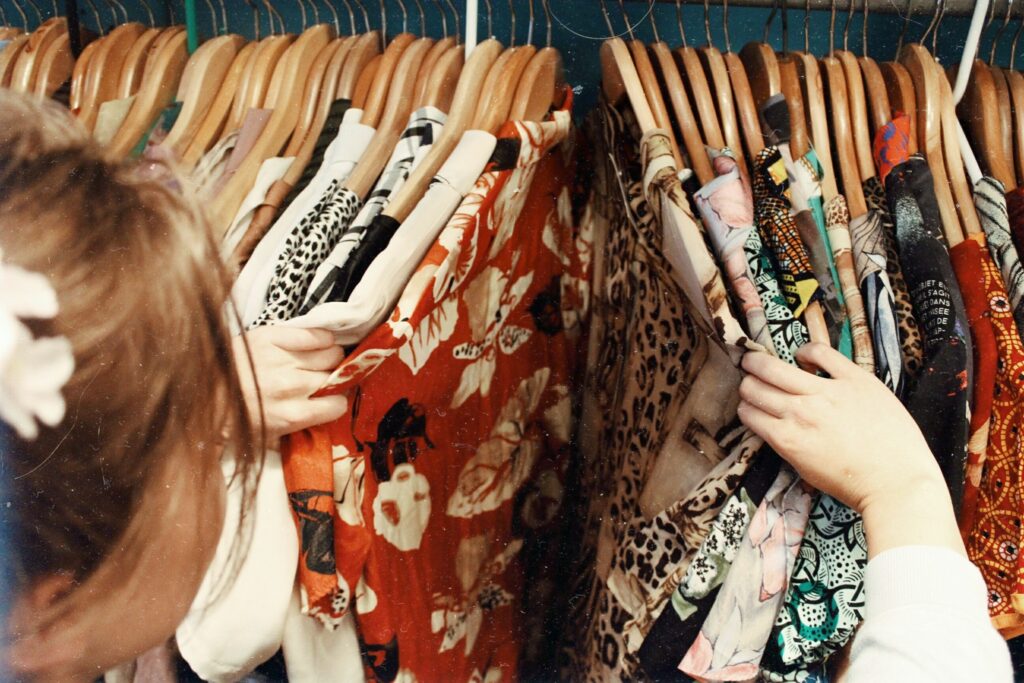
End Of Life Care
Sustainably caring for your clothes includes caring for them for their entire life cycle, including at the end. But, the end for you doesn’t need to be the end of your clothes’ life completely. There’s plenty of avenues to explore in giving your clothes a second or even third life.
Sell Online
If your clothes are still in good condition, you can sell them online on peer-to-peer marketplaces like Depop and Poshmark or resale marketplaces like ThredUP.
Give To A Friend
If you’re feeling generous and not looking to pocket some cash monies from selling your clothes, giving or swapping your clothes with a friend can help keep your wardrobe fresh without contributing to textile waste.
Donate
In the same vein of giving, donating unwanted, good condition clothing to a local thrift store can help give your clothes a second life. Make sure to only donate clothes in good condition or they’ll likely end up in a landfill anyway.
Recycle Into Cleaning Cloths
If your clothes are torn, tattered and damaged beyond repair, there’s still one more option before the landfill takes them – cleaning clothes and rags. Useful for a multitude of occasions, a rag that you really don’t care about always comes in handy and bonus points for saving an item from the trash for a little bit longer.
Sustayn is designed to present the most useful recommendations for environmentally friendly approaches and items. We update links when possible, but note that links can be broken and subject to change.
